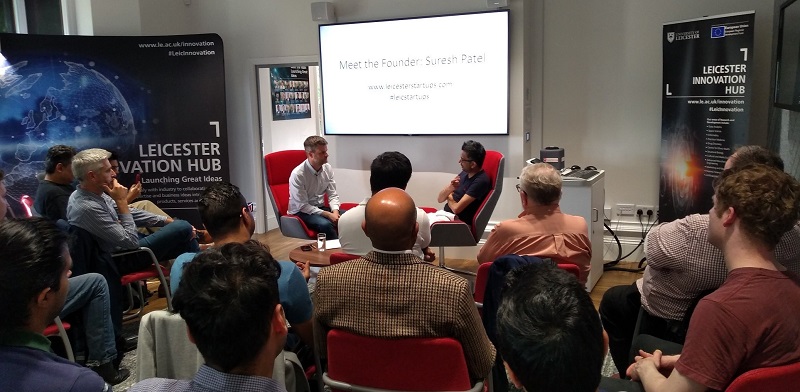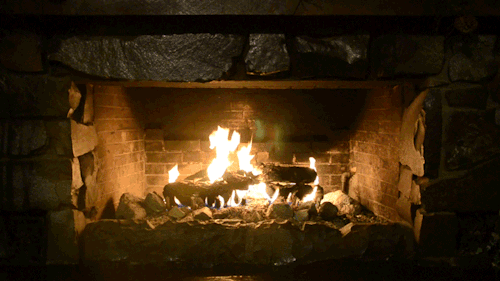How to Run a Fireside Chat at Your Event
Fireside chats are a great alternative to traditional presentations and are increasingly popular in everything from TED talks to small community meetups. In this article, we’ll describe some of the benefits of fireside chats and give some tips on making them work for you.
What Is a fireside chat?
In essence, you’re replacing a traditional speaker presentation with a ‘TV chat show’ format where an interviewer/moderator converses with the main guest (your speaker) in a more informal, less orchestrated setting. Often the topics covered are more fluid and less prescribed.
Fireside chats originated from a series of radio addresses given in the 30s and 40s by U.S President Franklin D. Roosevelt as a means of creating a more informal yet direct means of communicating directly with citizens. Roosevelt wanted to recreate the informality and comfort of a conversation within people’s homes.
Nowadays it’s more commonly associated with informal interviews with business leaders, celebrities and other influencers.
 (this is me interviewing a local tech entrepreneur at a Leicester Startups community event. photo ©Matt Clifton)
(this is me interviewing a local tech entrepreneur at a Leicester Startups community event. photo ©Matt Clifton)
Advantages over traditional presentations
Less preparation for the guest speaker
Fireside chats take a ton of pressure off your guest speaker when it comes to preparation. They don’t need to work on a slide deck or speech and there’s far less potential for anxiety prior to the event – they just have to show up! If you’re an event organiser this can be a big attraction to help win conversations with time-constrained and hard-to-reach speakers (who are often the most interesting people!)
This does of course place an extra burden on the host when it comes to preparing questions but it’s totally worth it.
More control for the host
Because fire side chats are host-led this gives you much more opportunity to control the conversation. If you’ve ever had a rambling or uninspiring presenter at one of your events you’ll know how valuable this could be! It gives you the ability to cut topics or questions short, navigate awkward or off-topic subject matter and keep everything running to schedule.
More candid responses from the speaker
When guests are speaking off-the-cuff in a more conversational format they are far more likely to reveal insights and personality. Even fascinating individuals can fall into the trap of giving a “death by PowerPoint” presentation but the fireside chat format completely avoids this.
Lets the conversation go in interesting directions
There’s nothing worse than an interesting person tied down to a boring topic! A good host will be able to pick up on interesting comments made by the guest and use those take the conversation off at an interesting tangent. This fits well with the age-old idea that people like to hear stories rather than facts and will remember far more as a consequence.
Better interaction with the audience
As you can imagine we at ParticiPoll love interactive events and fireside chats are a great opportunity for this. If the guest is willing and the audience setting is intimate enough you can get a great rapport with them and the speaker. Questions from the audience feel like a continuation of the conversation rather than a grilling or a lecture. You can still slip in a ParticiPoll audience poll or two during the session.
Everybody is much more relaxed
The formality of a proper lecture or presentation creates the sort of tension you might associate with a theatre show. Whilst this can work with truly charismatic speakers (think TED talks), for most people this is a bit of a turn-off. With a fire side chat, there is no script to follow, no risk of stage fright and no rules about who can interact with whom. Everybody at the event (and especially the speaker) will feel far less pressure to ‘perform’.
Tips on running a great fireside chat
1. Choose interesting guests
Well duh! But this point is particularly important with fireside chats as you really want to reveal the personality and life experience of your guests. Choose individuals who have had a interesting career or life story – especially life experience outside of their main occupation. Choose someone you yourself would be genuinely interested to converse with.
2. Do your research
Fireside chats put the onus on the interviewer to get to know at least some of the speaker’s background, life story and achievements. You can’t start the chat with “who are you?” so make sure you know enough to spark conversation otherwise interesting aspects will be missed.
3. Send a summary of your questions to your guest prior to the event
Unless you’ve agreed in advance that the ‘chat’ should be more of a grilling (say for a politician), it’s always polite to send them a brief summary of the sorts of questions you plan on asking so that they can understand the format and likely topics. Speakers will not normally respond well to an ambush or other source of embarrassment.
4. Make it their story
As with all presentations, making it like the telling of a story always gives a good rhythm to the event. Start with the speaker’s origins, backstory then move onto what they’re working on right now and finally where they hope to be in the future. You can skip some of the backstory aspects if the speaker is already well known to the audience.
5. Make it personal and conversational
I don’t mean ask for their inside leg measurement – I mean treat it as a genuine two-way conversation that you would have if you were sharing a coffee with the speaker. Make it as much about them personally as their topic or area of expertise.
6. Ask the questions your audience will be thinking of
Whilst it’s always good to hold a Q&A towards the end of the event, it can be really frustrating for the audience if they all have the same burning question on the tip of their tongues but have to wait until the end to have it answered. The host needs to look out for incomplete answers or obviously intriguing things that the guest should elaborate on. If you have a bolder audience they may interject during your main conversation and you should generally encourage this.
7. Be Socratic
Like a good mentor, you should use questions rather than statements to draw things out from your guest. Socratic questions are phrased in such a way as to remove an sense of assumptions or judgement of the subject individual. For example, if your guest admits to a past mistake try asking “With hindsight, would you have done that differently?” rather than stating “that sounds like a bad idea!”
8. Make it interactive
As described above, getting the audience involved in the conversation will really help keep things interesting and will also allow them to provide some steer on the direction. In the context of a fireside chat, this will be far less disruptive than it would be in a formal presentation so do encourage audience members to pipe up.
You could also introduce a few ParticiPoll audience polls at key points during the conversation. Avoid questions that could be interpreted as criticism of the guest however.
9. Record your conversation and share it
Fireside chats make great video content for your business or community. Provided your guest is comfortable with and and you don’t think it will stifle the conversation, getting it taped is well worth it. If you run such events regularly and get into the habit of taping them it can be a good idea to delay the release of the video for a while to encourage people to turn-up in person rather than just watch later.
10. How to set-up the event
Fireside chats are pretty low-maintenance affairs but there are a few setup things to consider. All you basically need a couple of chairs and maybe a table for you and the speaker and then a bunch of chairs for the audience. Keeping the audience physically close to the speaker is a good idea to create intimacy. Lapel (lavalier) mics are a good idea if you’re in a larger room and want to avoid you and your guest having to shout. You might also want a roving mic for audience questions too. A glass of water for you and your guest is a good idea as is a suitable backdrop if you can manage it

